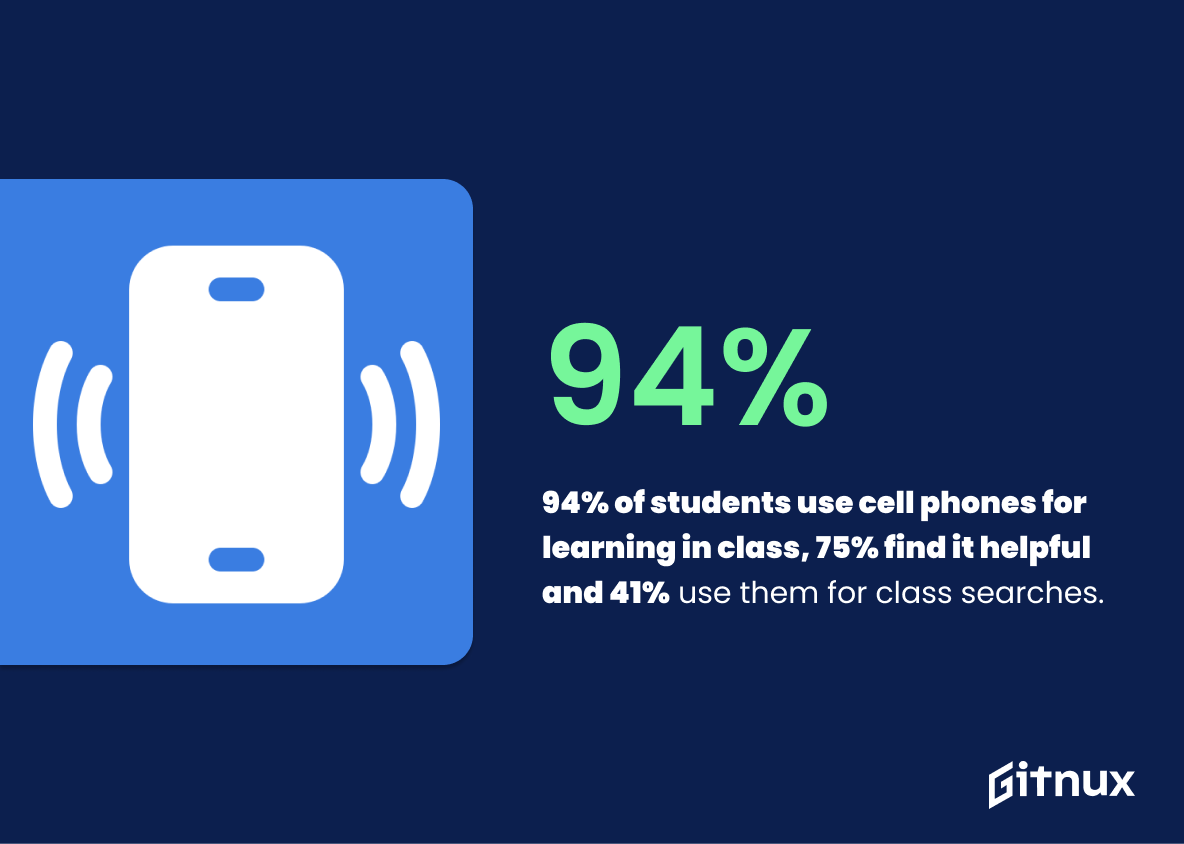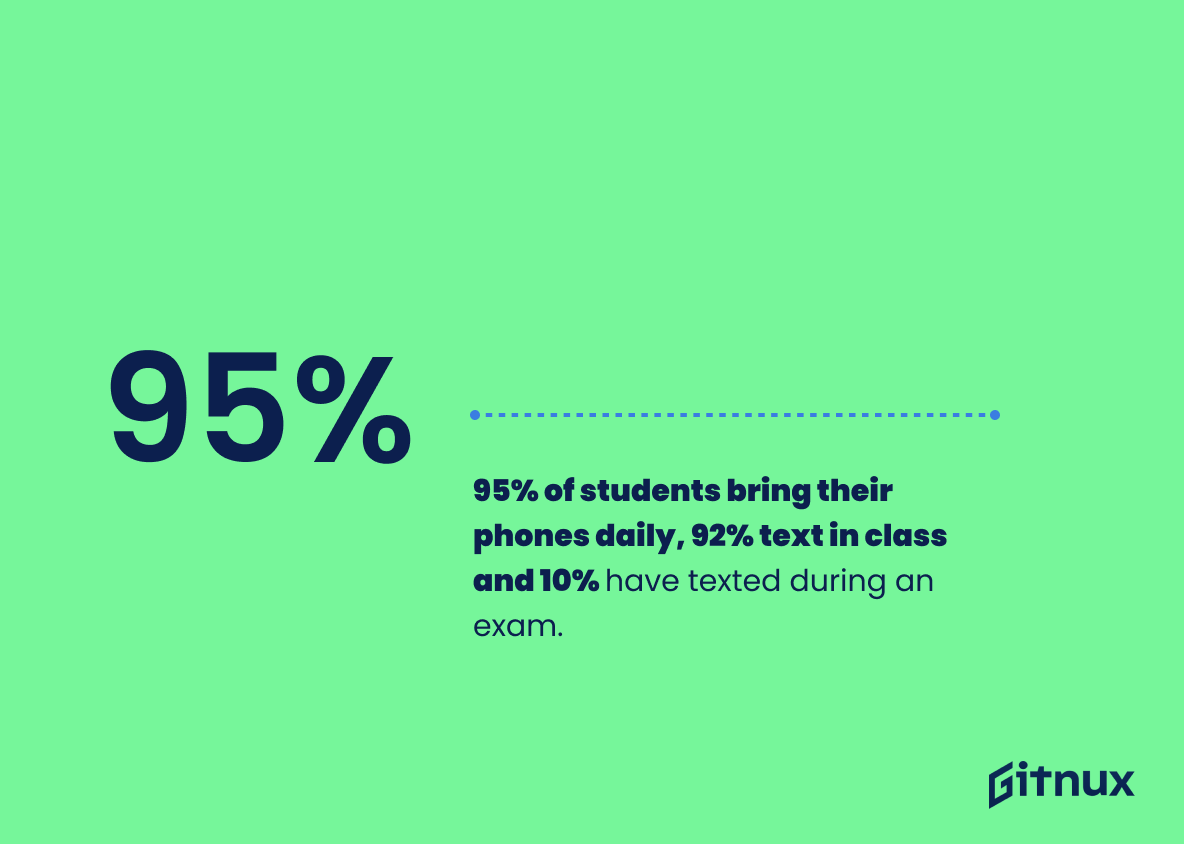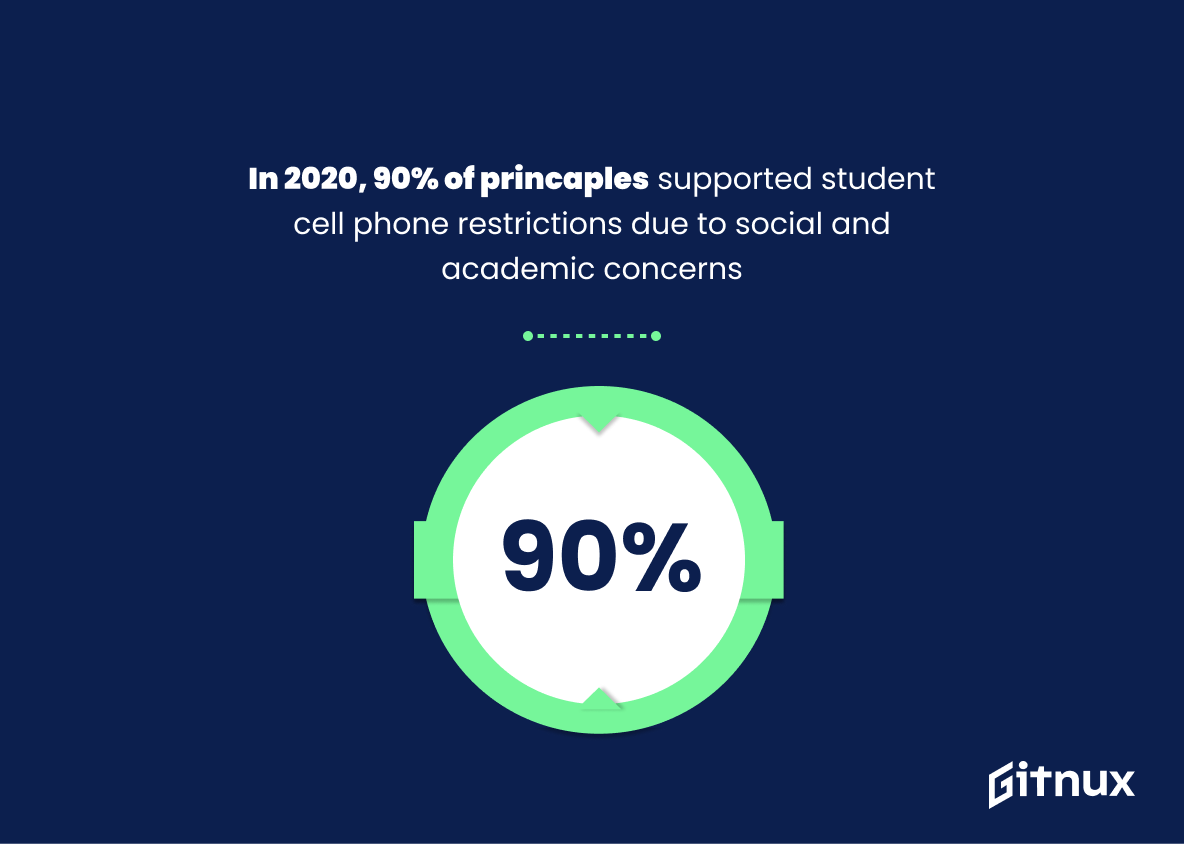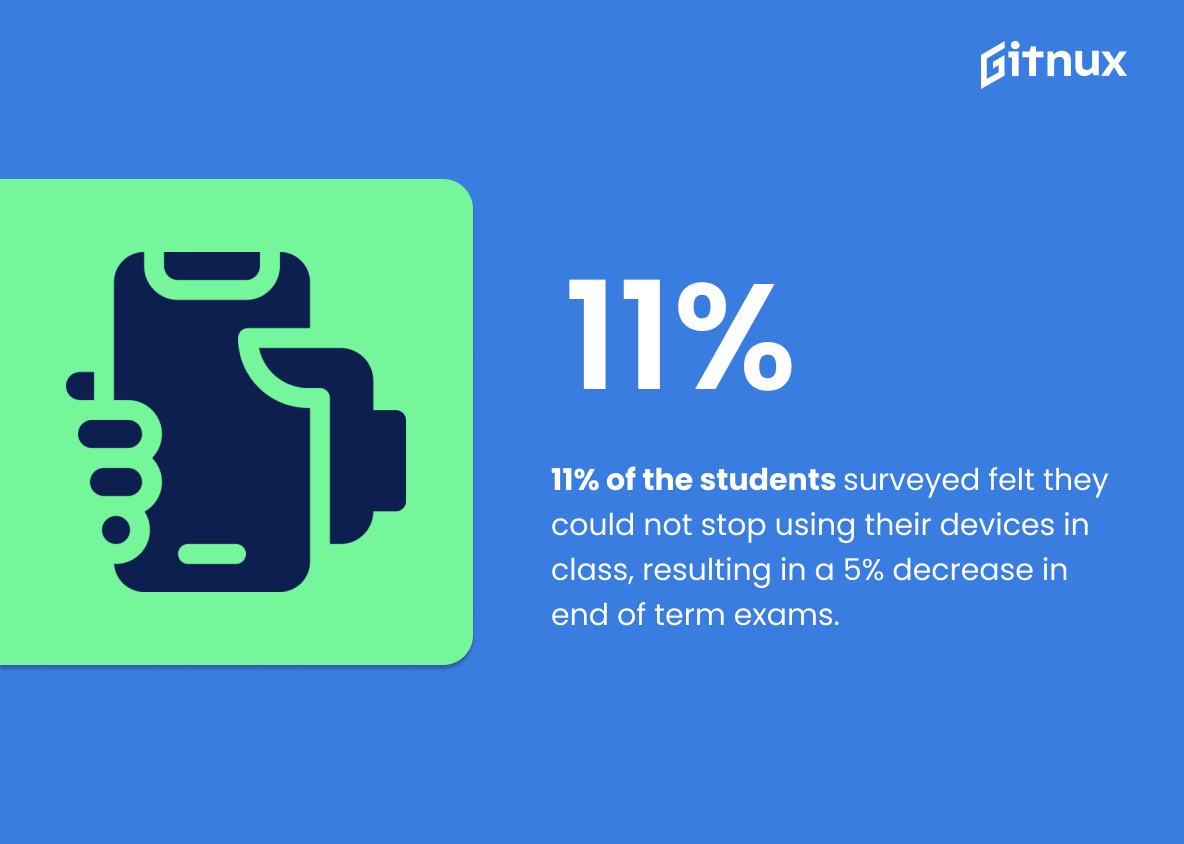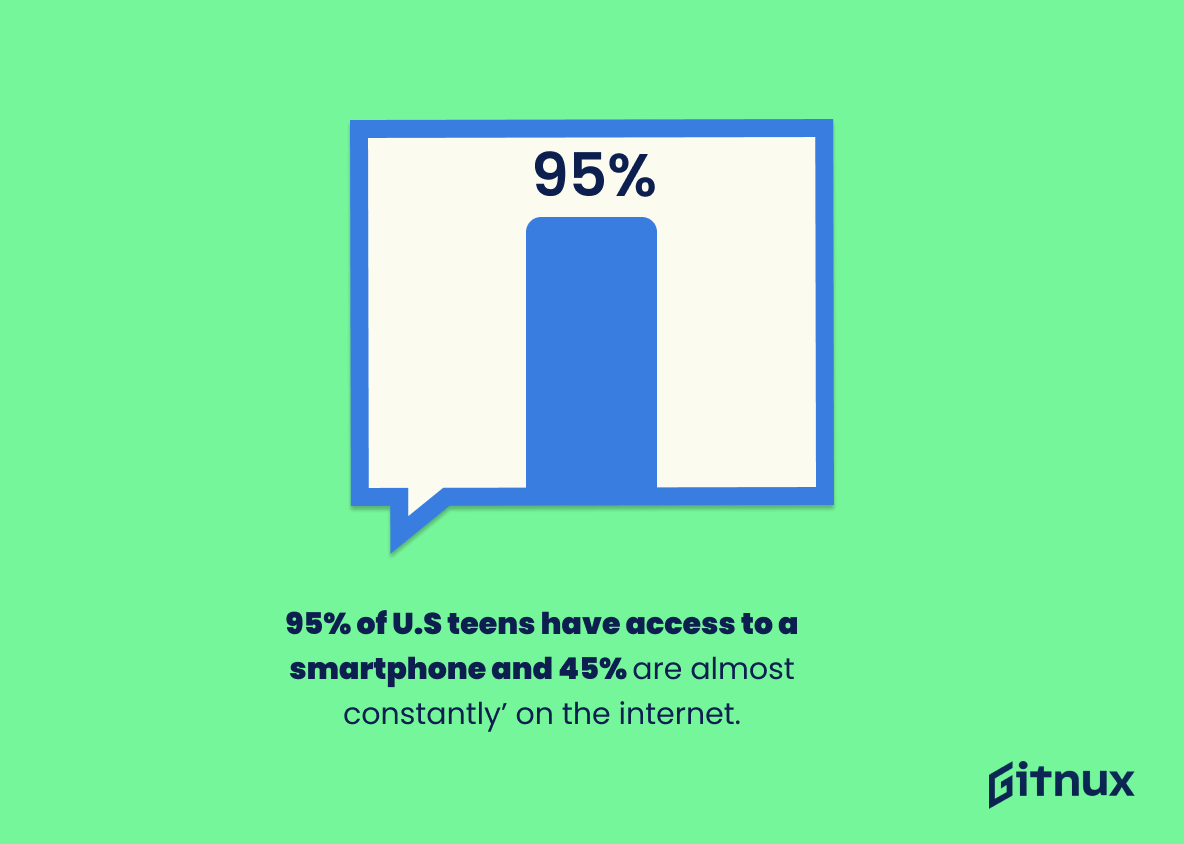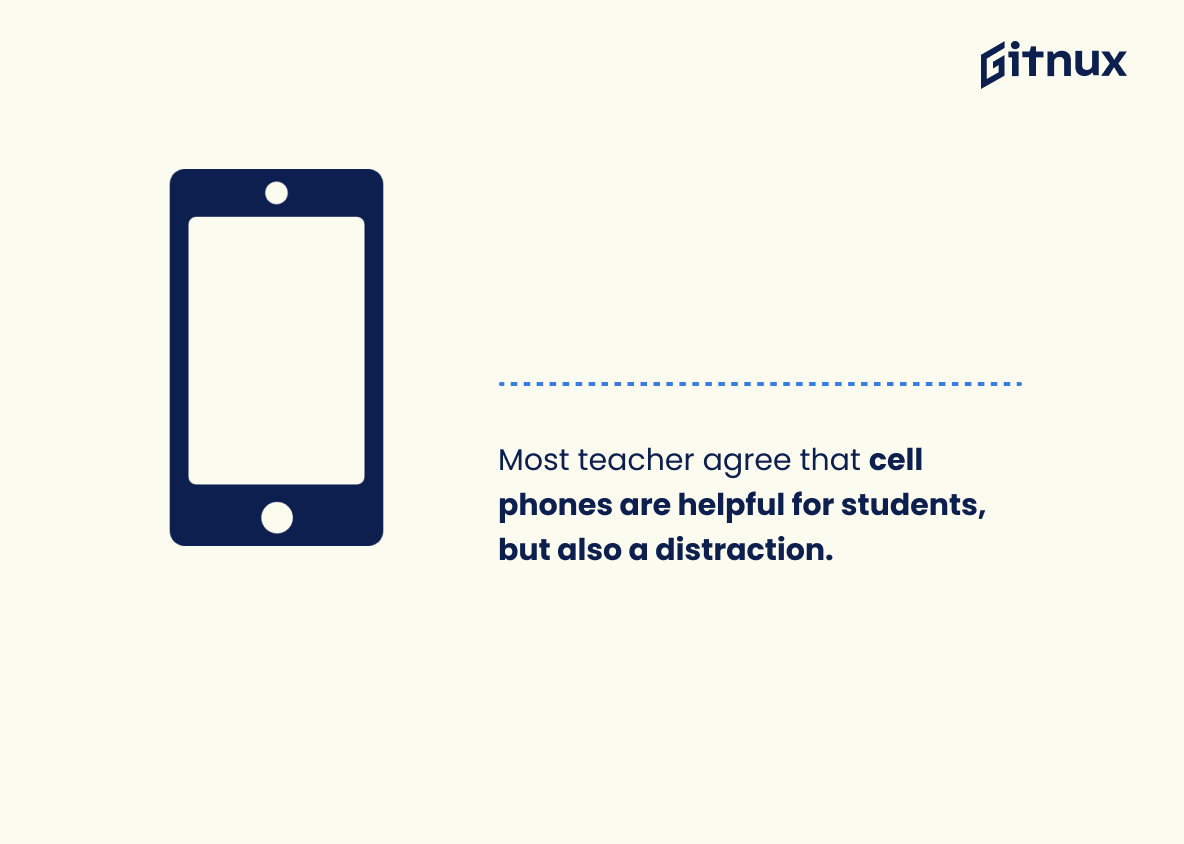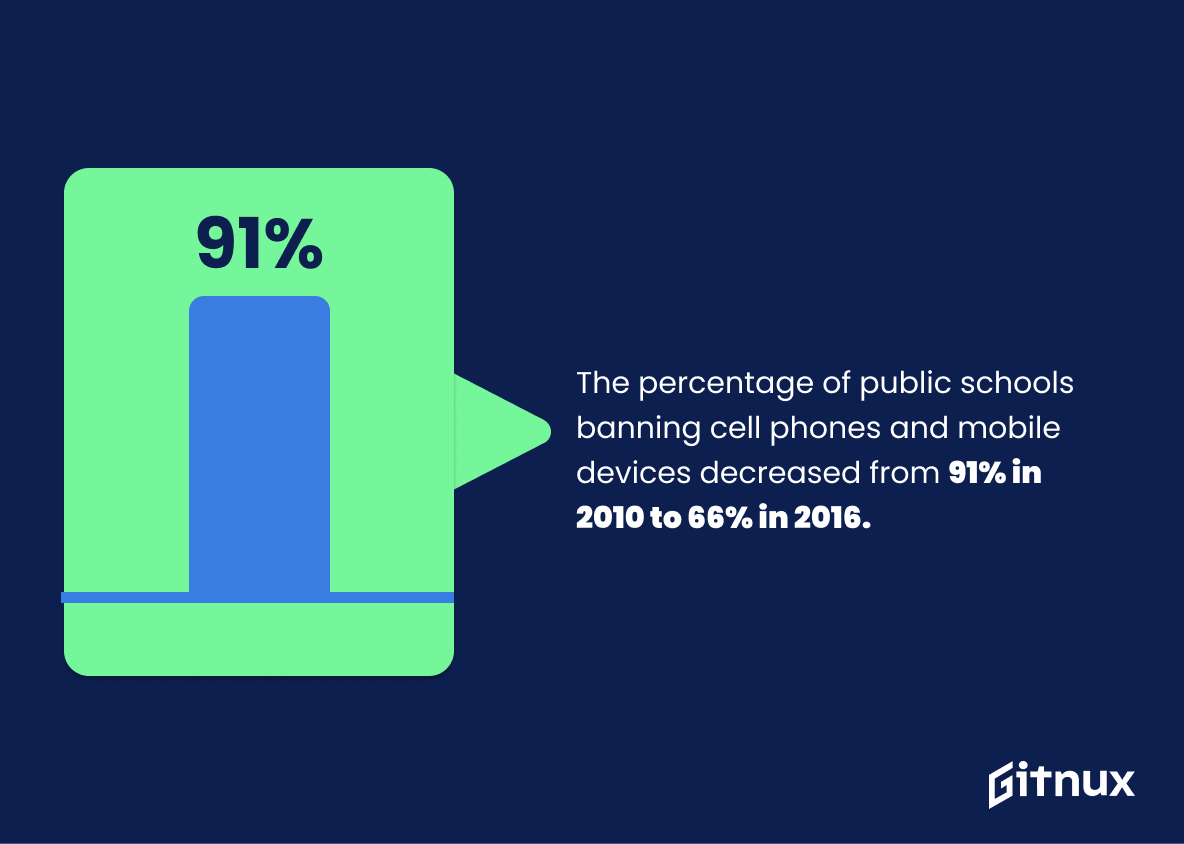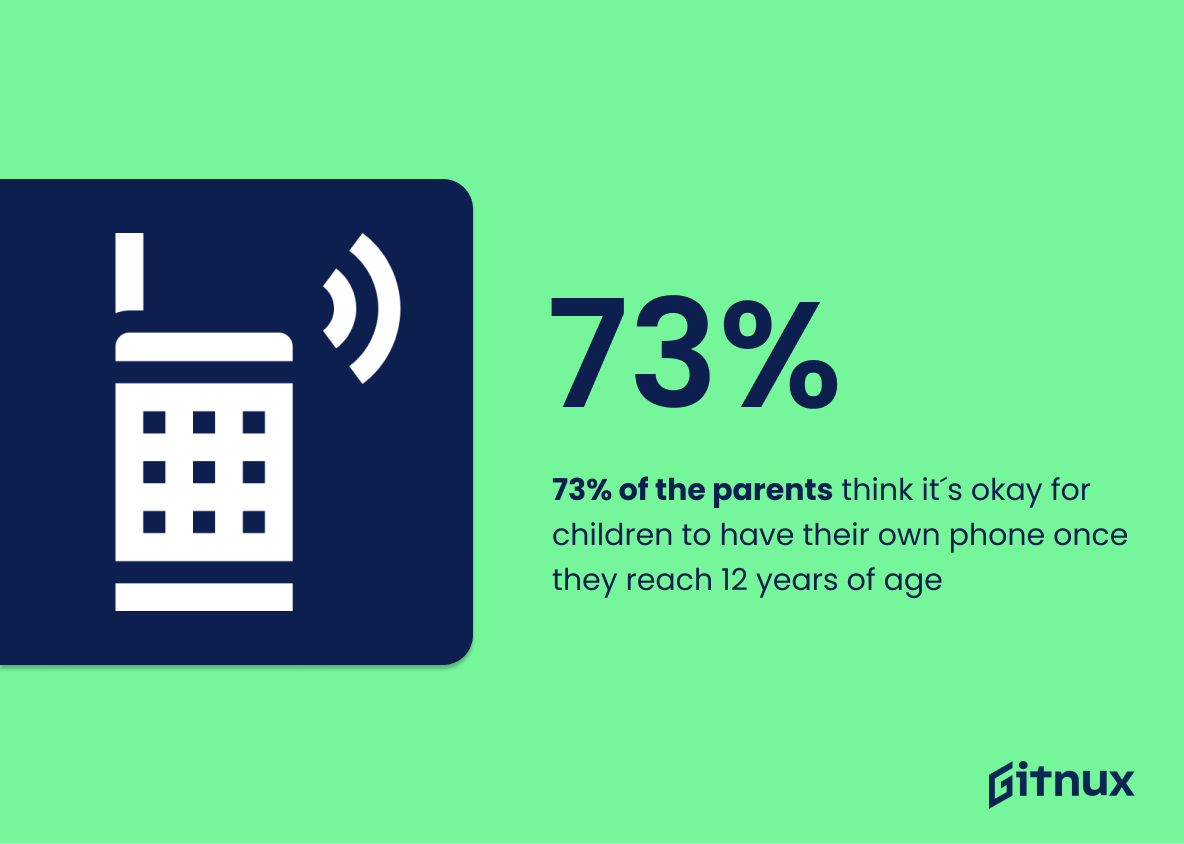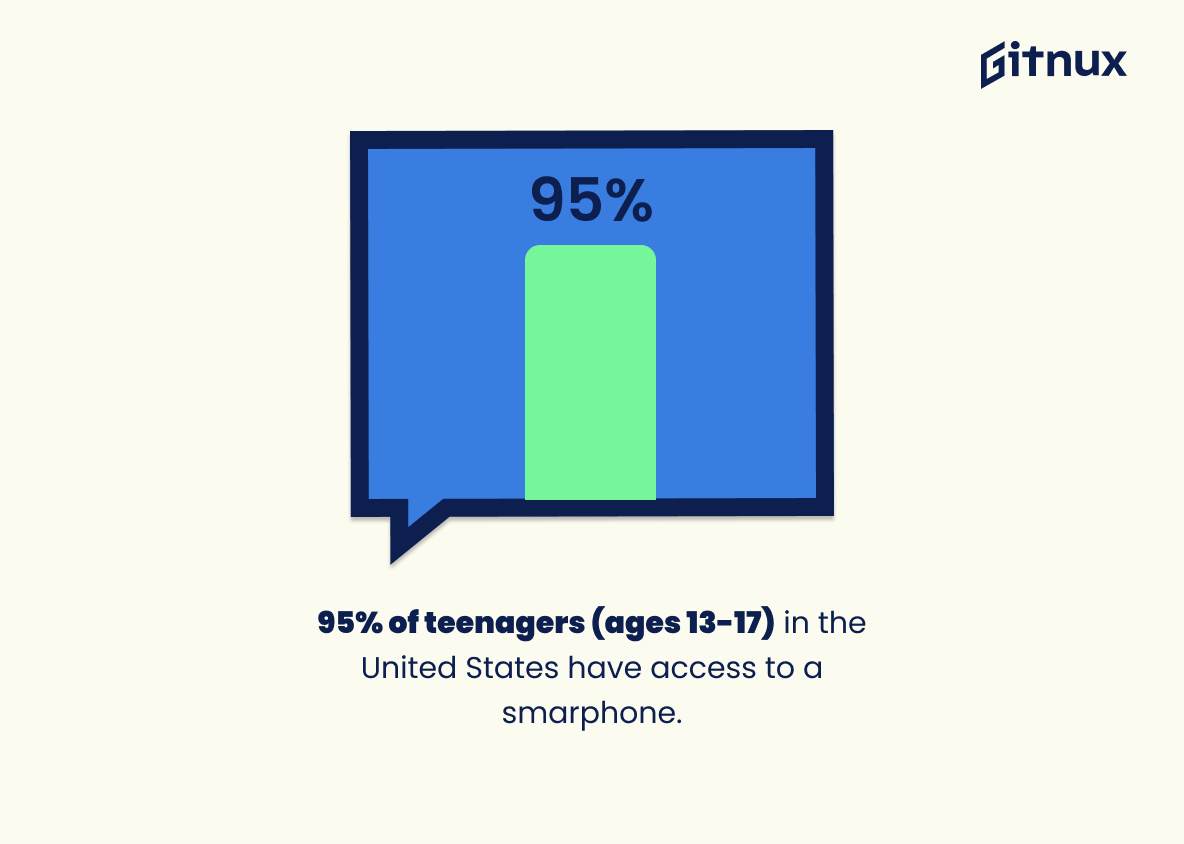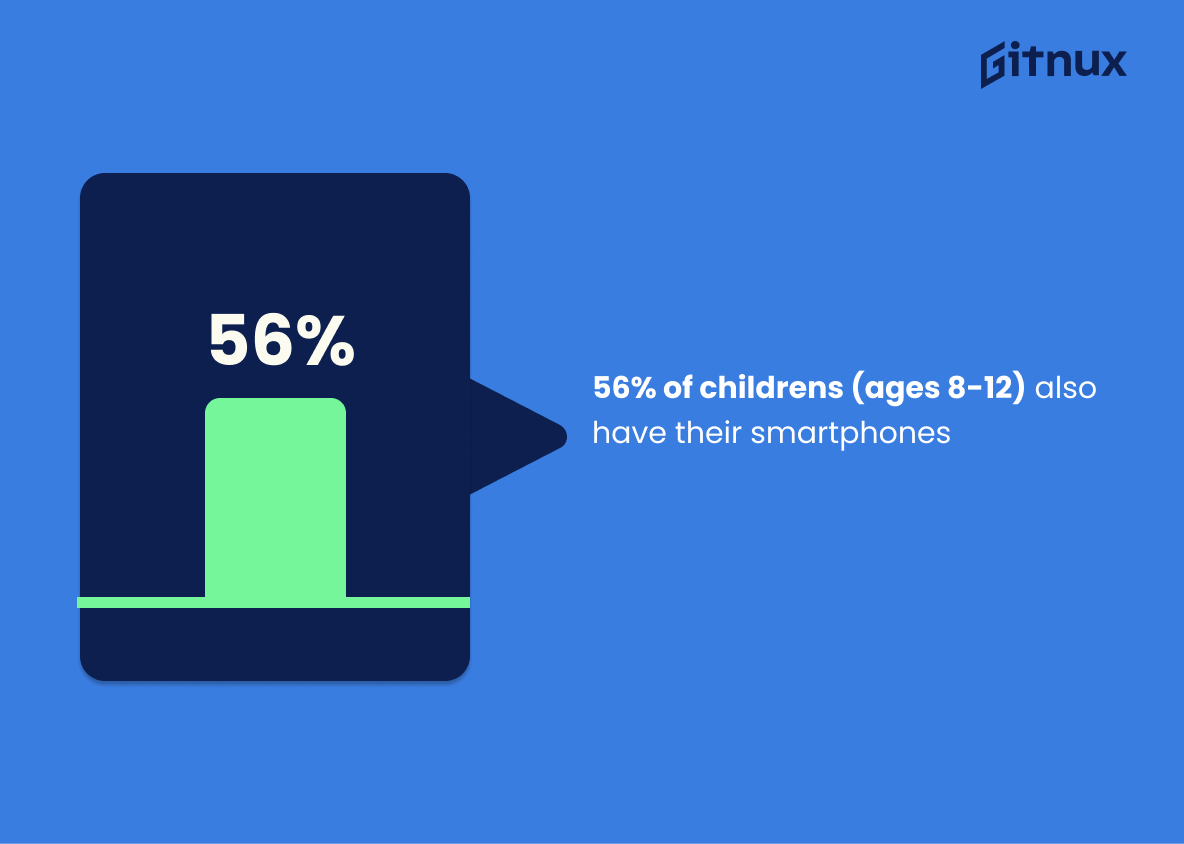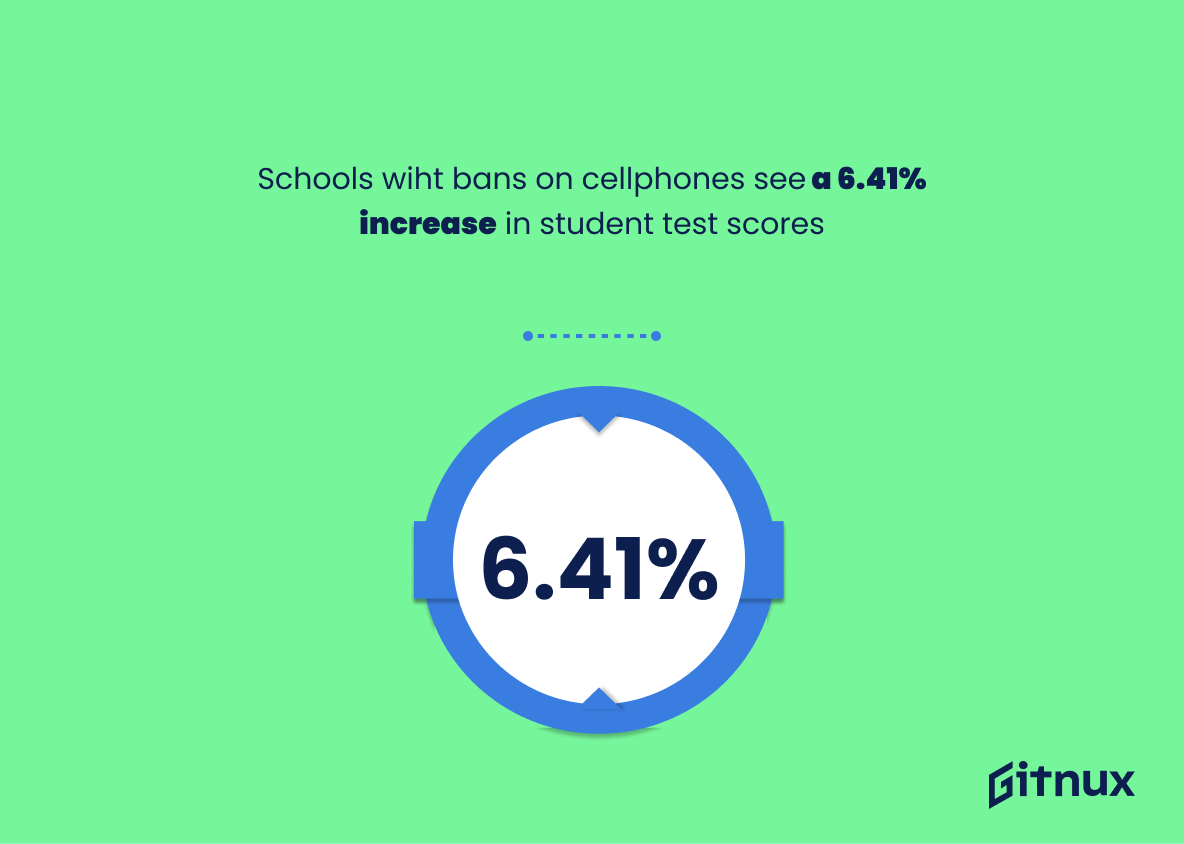Cell phones have become a ubiquitous part of our lives, and it’s no surprise that they’ve made their way into the classroom. But what do the statistics say about the use of cell phones in school?
In this article, we’ll take a look at some of the most recent research on the topic and explore the implications of these findings. We’ll also discuss the potential benefits and drawbacks of allowing students to use their phones in school. So let’s dive in and see what the data has to tell us.
Cell Phone Usage in School: Important Statistics
11% of students surveyed felt they could not stop using their devices in class, resulting in a 5% decrease in end-of-term exams.
84% of parents report taking steps to monitor or restrict their child’s online activities.
Cell Phone Usage in Schools: Statistics Overview
95% of students bring their phones to class every day, 92% use them to text in class, and 10% admitted to having texted during an exam.
The majority of students are bringing their phones to school and using them in class, even during exams, which could be a distraction from learning.
94% of students want to use their cell phones in class for academic purposes; 75% believe it has improved their ability to learn and retain information, and 41% use them to Google answers to in-class questions.
The majority of students believe that cell phones can be used for educational purposes and that they can be beneficial to their learning.
This suggests that incorporating cell phones into the classroom can be a viable option for improving student engagement and learning outcomes.
Over 90% of principals in a 2020 study supported restrictions on cell phone use for students, with 80% believing it had negative consequences for social development and academics, and 77% of schools reporting prohibiting cell phones for non-academic use.
There is a strong consensus among school administrators that cell phone use should be restricted in schools, and that there is a clear understanding of the potential negative impacts of cell phone use on student development and academic performance.
11% of students surveyed felt they could not stop using their devices in class, resulting in a 5% decrease in end of term exams.
It shows that when students are using their devices in class, it can lead to a decrease in their academic performance. This is important information for educators and administrators to consider when deciding whether or not to allow cell phones in the classroom.
84% of parents report taking steps to monitor or restrict their child’s online activities.
Parents are aware of the potential risks of their children using cell phones and are taking steps to ensure their safety. This could be a factor in the decision to allow or restrict cell phones in schools.
95% of U.S teens have access to a smartphone and 45% are ‘almost constantly’ on the internet.
It also shows how important it is for schools to have policies in place to regulate the use of cell phones and internet access in the classroom.
Most teachers agree that cell phones are helpful for students, but they are also a distraction due to sites like YouTube.
While cell phones can be beneficial in the classroom, they can also be a major distraction to students if not used properly.
The percentage of public schools that banned cell phones and other mobile devices dropped from 91% in 2010 to 66% in 2016.
Public schools are becoming more lenient when it comes to the use of cell phones in school.
This could indicate that schools are recognizing the educational benefits of allowing students to use their phones in school, such as using them to access online resources or to communicate with teachers.
68% of students reported that ringing cell phones were the most common electronic external distractor, with 21% of them being extremely distracted by the noise, demonstrating that cell phone noise in classrooms can be disruptive.
This information can be used to inform decisions about cell phone policies in schools, such as whether or not to allow cell phones in the classroom, or to create policies that limit the use of cell phones in order to reduce distractions.
73% of parents believe it is acceptable for children to have their own phone only after they have reached at least the age of 12.
This reveals the age at which parents are comfortable with their children owning a cell phone, which is important to consider when making decisions about cell phone use in the classroom.
95% of teenagers (ages 13-17) in the United States have access to a smartphone.
This demonstrates the prevalence of smartphones among teenagers in the United States. With such a high percentage of teenagers having access to a smartphone, it is likely that many students are bringing their phones to school, which can have both positive and negative implications for the learning environment.
73% of K-12 teachers surveyed said students use phones for non-educational purposes.
This statistic is a telling indication of the prevalence of cell phone use for non-educational purposes in K-12 classrooms. It highlights the need for schools to take steps to ensure that students are using their phones for educational purposes, rather than for activities that are not related to their studies.
56% of children (ages 8-12) also have their smartphones.
A majority of children in the 8-12 age range have access to their own smartphones, which could have a significant impact on their education. With such a high percentage of children having their own devices, it is likely that many of them are bringing their phones to school, which could have a range of implications for the classroom environment.
Schools with bans on cellphones see a 6.41% increase in student test scores.
By removing the distraction of cellphones, students are able to focus more on their studies and achieve better results. This is an important piece of information for anyone considering implementing a cellphone ban in their school, as it demonstrates the potential benefits of such a policy.
92% of teens report going online daily, with many accessing the internet on their cellphones during school hours.
The majority of teens are using their phones to access the internet during school hours, suggesting that cellphones are becoming an increasingly important part of the school day. This statistic is important to consider when discussing the potential benefits and drawbacks of allowing cellphones in school.
Over 60% of teenagers admit to texting during class.
A majority of teenagers are engaging in a behavior that can be disruptive to the learning environment. This statistic is an important piece of evidence to consider when discussing the impact of cell phones in school.
39% of middle school students and 55% of high school students regularly use digital devices in school for learning.
This demonstrates the prevalence of digital devices in the classroom. It shows that a majority of students in both middle and high school are using digital devices for learning, indicating that digital devices are becoming an increasingly important part of the educational experience.
89% of high school students have experienced cyberbullying via their cellphone in school.
This highlights the need for schools to take proactive steps to address this issue, such as implementing policies that limit the use of cellphones in school and providing students with resources to help them recognize and respond to cyberbullying.
Only 30% of teachers reported using mobile apps or other software to incorporate cellphones into their lesson plans.
The majority of teachers are not taking advantage of the potential of cellphones to enhance learning. This could be due to a lack of knowledge or resources, or a reluctance to embrace new technology. Whatever the reason, it is clear that there is a need to increase the use of mobile apps and software in the classroom.
Conclusion
In conclusion, the use of cell phones in school is a complex issue with many different perspectives. While there are many potential benefits to allowing students to use their phones in school, there are also potential risks.
It is important for schools to weigh the pros and cons of allowing cell phones in school and to make an informed decision based on the available data. Ultimately, the decision should be based on what is best for the students, the school, and the community.
References
1 – https://www.tmcnet.com/topics/articles/2021/05/06/448799-effect-cell-phone-use-academic-performance.htm
2 – https://campustechnology.com/articles/2017/12/12/students-want-to-use-their-cell-phones-in-class.aspx
3 – https://www.usnews.com/education/best-high-schools/articles/cellphones-in-school-what-to-know
4 – https://www.verywellfamily.com/how-smartphones-are-creating-distractions-in-the-classroom-4174646#:~:text=The%20students’%20attention%20is%20divided,to%20be%20recalled%20or%20retained.
5 – https://www.pewresearch.org/internet/2016/01/07/how-parents-monitor-their-teens-digital-behavior/
6 – https://kidslox.com/guide-to/pros-of-cellphones-in-school/
7 – https://manipalblog.com/advantages-of-using-mobile-phones-for-students/
8 – https://districtadministration.com/the-great-smartphone-debate/
9 – https://www.ncbi.nlm.nih.gov/pmc/articles/PMC5648953/
10 – https://www.pewresearch.org/internet/2020/07/28/parenting-children-in-the-age-of-screens/
11 – https://www.statista.com
12 – https://www.edsurge.com
13 – https://study.com
14 – https://www.edweek.org
15 – https://www.commonsensemedia.org
16 – https://www.pewresearch.org
17 – https://cep.lse.ac.uk
